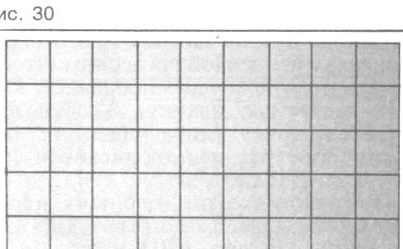On the walls, he finished with “sawn” and “wild” stone. I already talked about them. Over the fireplace he fashioned the face of some unthinkable devil. He was blinded from one solution. The ceiling of the room was just a masterpiece. He took an old semi-dried paint of an incomprehensible color and applied it to a ceiling of about one square meter. Then he poured sifted sawdust onto the “falcon” and stuck them on the paint to the ceiling. Then he took part of the sawdust directly with a finger of his hand, drawing on the ceiling a figure resembling a "sawn" stone on the wall. And so, meter by meter, he covered the ceiling with sawdust, which not only covered the ceiling, but created a pattern on it. You can not compare this coating with chipboard. Particleboard has a smooth surface. Here, the sawdust stuck anyhow. Only the color of the ceiling was like chipboard. But that’s not all.
About a day later he started painting. First, making a glutinous solution from chalk, he whitewashed the ceilings. From the spray gun. When the ceiling was dry, he did a “wash”.
“Washing” is an architectural term and means a smooth transition from a color halftone to a full, thick tone. For example, a white-blue halftone gradually changes to a bright blue tone. You can try it yourself. Take a piece of paper and draw a rectangle on it, divided into ten stripes (Fig. 30).

Now dilute the watercolor in water. Paints in water need to be added quite a bit. Literally a bit. Fill this square with the resulting paint. The color of the solution should be such that it is barely noticeable.
When the paper dries, starting from the second strip, paint over the square again; then after drying, starting from the third strip, paint over the square again. And so on to the tenth strip. What are you learning ~? Smooth color transition from halftone to saturated tone.
I knew about this architectural technique for a long time, we used it, but only when we painted "projections". In practice, I never met with a “wash”. And then it happened. This painter had no idea what the name of what he did was called. And he did this: starting from the corner window, the white color turned blue as it moved away, until it turned into a thick azure one at the other end of the room.Then this azure color smoothly and gradually, descending along the wall, turned into green, and then into emerald. The seams that he painted on the wall, he painted in light green, on the ceiling - in light blue. How did he do that? What took the intervals of painting? I don’t know, because when he came to the emerald color, he himself was gray, and his tongue was utter rubbish.
Using the “washing” method, one can create something similar, but such a sense of color is, of course, from God. All its decoration was the fruit of his imagination, his courage.
There is a rule in architecture: when designing an internal or external design, use no more than three primary colors. Any colors, but only three, all the rest of their midtones. The presence in the interior of more than three bright colors gives a colorful picture.
And further. Lighting. Using various types of lamps in the interior, it can be changed beyond recognition. There is no need to go far for an example. You know how light candles change the interior. Festive garlands for the New Year create a sense of celebration. Running colored rays - a disco feel. A lit table lamp - a sense of peace and work environment, etc. So, skillfully using lighting, you can create something very original.
Unfortunately, I can’t talk a lot about color and light. I'm just an engineer. My soul may or may not accept a ready-made color scheme. But being an artist and creating something of my own is not given to me.

